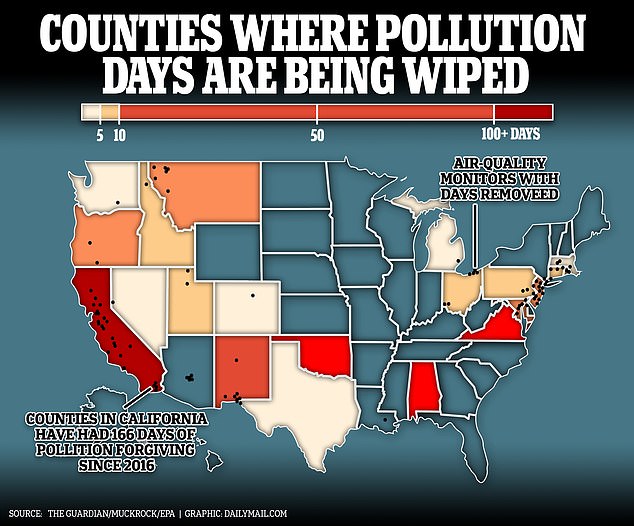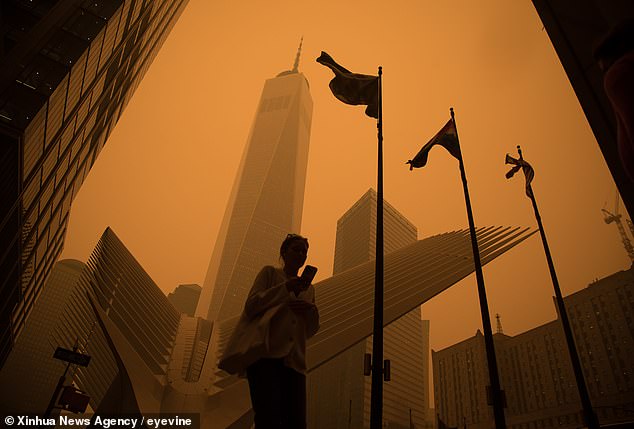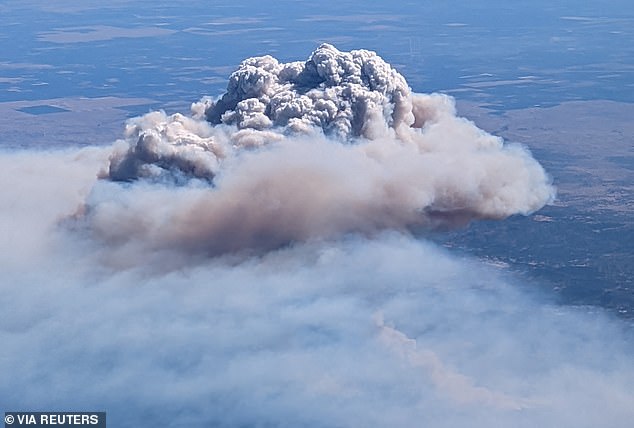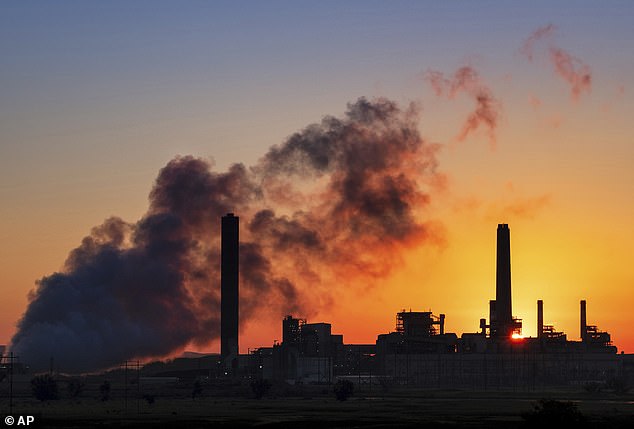Revealed: How a little-known pollution rule keeps the air dirty for 21million Americans
>
More than 21 million Americans live in counties where air pollution is kept in check due to a little-known legal loophole.
A provision of the Clean Air Act allowed local regulators in 70 US counties to claim that the air was cleaner than it actually was
The Extraordinary Events Rule allows pollution caused by “natural” or “uncontrollable” events — including wildfires — to be expunged from official county records maintained by the Environmental Protection Agency (EPA).
Experts have warned that misuse of the base means the true extent of contamination could be hidden, posing serious health risks to millions.
Industry lobbyists and business interests are among those who have pushed for amnesty for “extraordinary events,” researchers say.

A provision of the Clean Air Act allowed local regulators in 70 US counties to claim that the air was cleaner than it actually was

There have been many days with poor air quality due to wildfires in Canada
Affected areas include California, large swaths of the West Coast, coastal Rhode Island, the Rust Belt of Ohio and the Louisiana Gulf.
said Vijay Limaye, a climate and health epidemiologist at the Natural Resources Defense Council (NRDC). Watchman“We may have kind of a relatively stable and rosy picture when it comes to our regulatory world in terms of air quality trends.
“The real conditions on the ground in terms of the air that people breathe, day after day, week after week, year after year, is becoming an increasingly unhealthy situation.”
Several “problem” days came in June when Canadian wildfires blotted the skies across the eastern United States and the Midwest, with 20 states reporting high air quality readings.
EPA rules state: “Extraordinary events are unusual or naturally occurring events that can affect air quality but cannot be reasonably controlled using techniques that may be implemented by tribal, state, or local air agencies.”
“Exceptional events may include wildfires, high winds, prescribed fires, stratospheric ozone leaks, volcanic activity and earthquakes.”
Research by The Guardian and Muckrock found that regulators in 21 states applied for pollution tolerances, and 20 of those applications were granted.

Wildfires can have lasting effects on human health
Regulators noted 700 “exceptional” events and the EPA revised data on 139 of them.
“We have saved more lives in this country because we have cleaned the air than almost any other environmental policy,” Michael Warra, director of the Climate and Energy Policy Program at the Woods Institute for the Environment at Stanford University, told The Guardian. This is what is being undermined.
The world has changed. We live in a different world when it comes to wildfires and all their consequences, including air pollution.
A report published by the United Nations last year warned that forest fires were on track to increase by 50 percent by 2050, partly due to man-made climate change.
“Multiple studies have found that climate change has already led to increases in the length of the wildfire season, the frequency of wildfires, and the area burned,” the EPA says.
Research in 2022 focusing on fires in the Pacific Northwest suggests that pollution could put the health of millions of people at risk.

Experts warned that misuse of the rule could hinder attempts to eliminate polluters
Research conducted by scientists at the National Center for Atmospheric Research (NCAR) last year found that levels of carbon monoxide — a gas that signals the presence of other air pollutants — increased as wildfires spread in August.
The research showed that pollutants could affect more than 130 million people, including about 34 million in the Pacific Northwest, 23 million in the central United States, and 72 million in the Northeast.
Wildland fires and smoke pose increasing challenges and human health impacts in communities across the country, said Chania Pran, a spokesman for the Environmental Protection Agency.
“EPA works closely with other federal agencies, state and local health departments, tribal nations, and other partners to provide information, tools, and resources to support communities in preparing for, responding to, and reducing the health impacts of wildland fires and smoke.”
(Tags for translation)dailymail
